Nineteen-year-old Shakriya Pandey founded Vayudristi, a school project turned clean air revolution. Their affordable, AI-powered tech monitors pollution to inspire action.
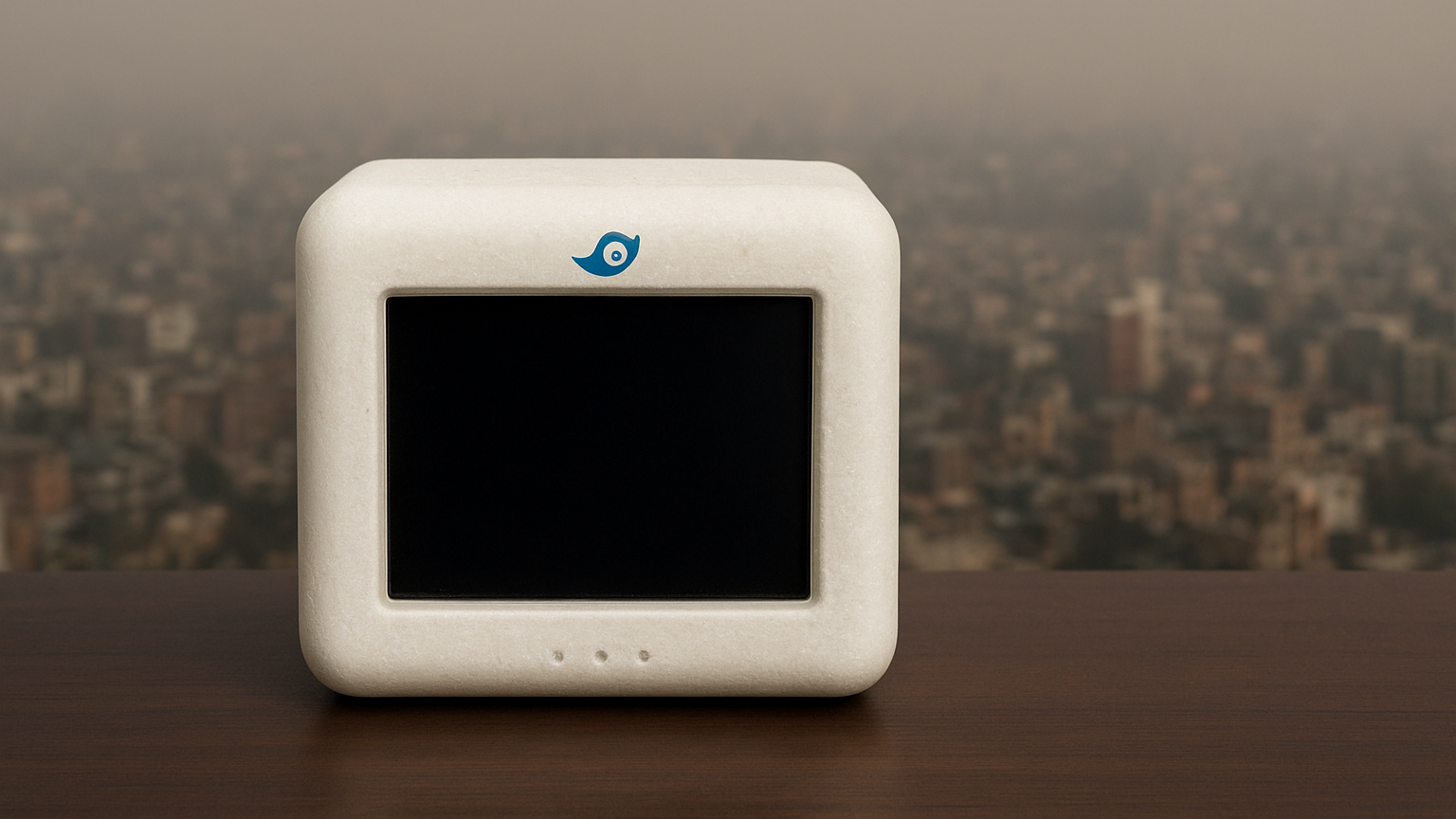
August 15, 2025
At just 19 years old, Shakriya Pandey has already built something many governments are still struggling with—an affordable, AI-powered, scalable solution to monitor and fight air pollution. As the Founder and Chief Executive Officer (CEO) of Vayudristi, he has led his team to create a full-stack clean air platform that blends ground sensors with satellite data, delivering real-time insights, forecasts, and action-oriented solutions. His journey is proof that innovation doesn’t have to wait for perfect conditions. Sometimes, it starts with simply asking—why is the air we breathe not clean?
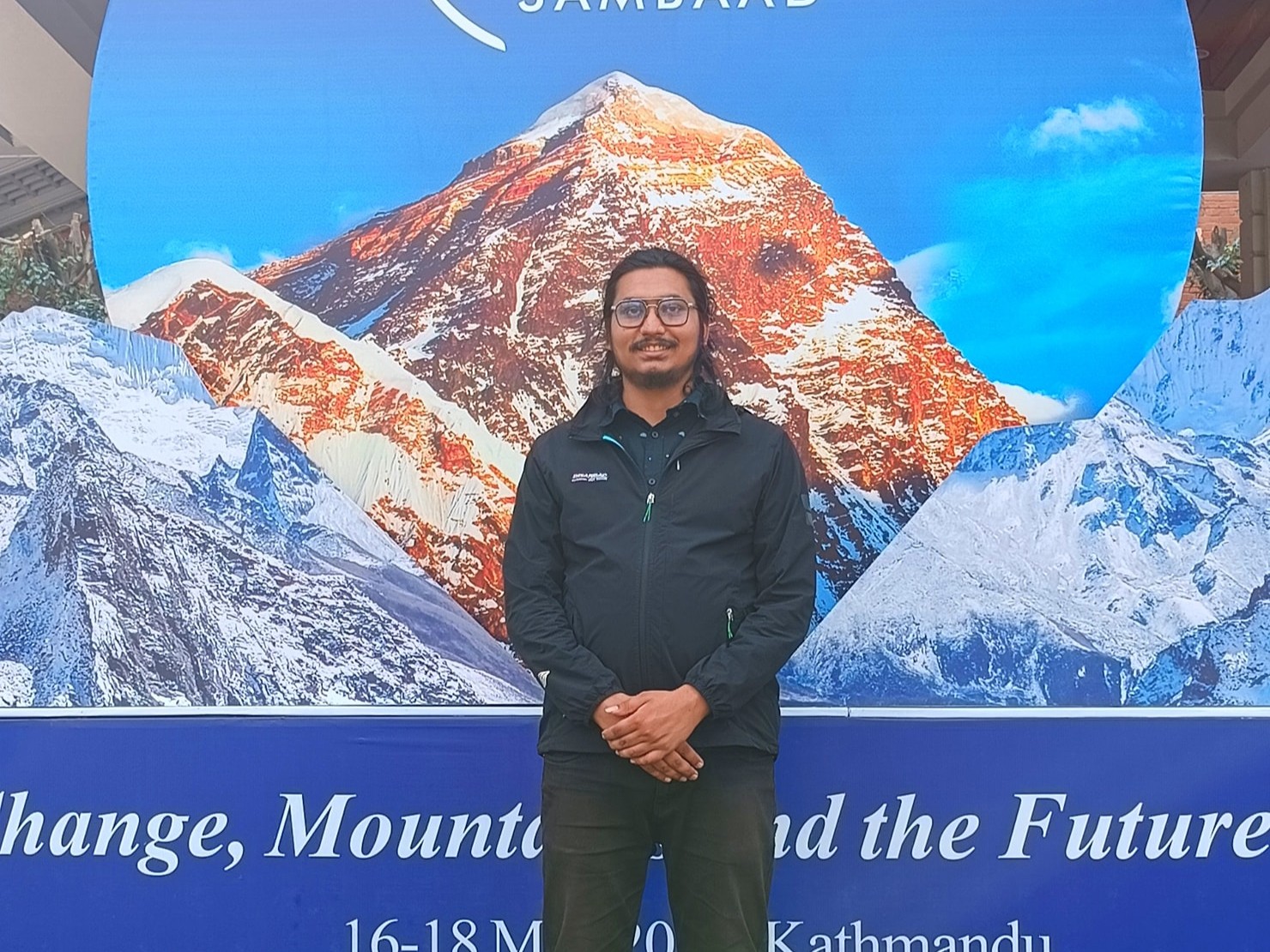
Shakriya Pandey, Founder and Chief Executive Officer (CEO) of Vayudristi at the Sagarmatha Sambaad Conference. Credits: Facebook/Shakriya Pandey
In less than two years, Vayudristi has expanded across Nepal, India, and Pakistan, providing data to institutions including Google and the Government of Nepal. Today, their system is live in more than 30 cities across seven provinces of Nepal. Along the way, they have won global recognition, including the Hult Prize, and recently secured NRs. 10 million on Shark Tank Nepal.
Nasana Bajracharya from DevPulse sat down with Pandey to hear how a school project turned into one of South Asia’s most promising clean-tech ventures.
It began back in school. Bhaktapur, where I grew up, was recorded as one of the most polluted cities. Our school was surrounded by trees, but still, the air felt heavy and unhealthy. That didn’t make sense to me. Later, I found out the pollution was coming from brick kilns located kilometers away.
That triggered the question—why are air quality monitors so bulky, expensive, and inaccessible? So I started experimenting with smaller, portable devices. The idea for its name, ‘Vayudristi’—which means “Vision of Air”—was born when we presented at the World Robotics Cup. We got incredible feedback from Indian government officials and private companies there, and it encouraged us to pursue it seriously.
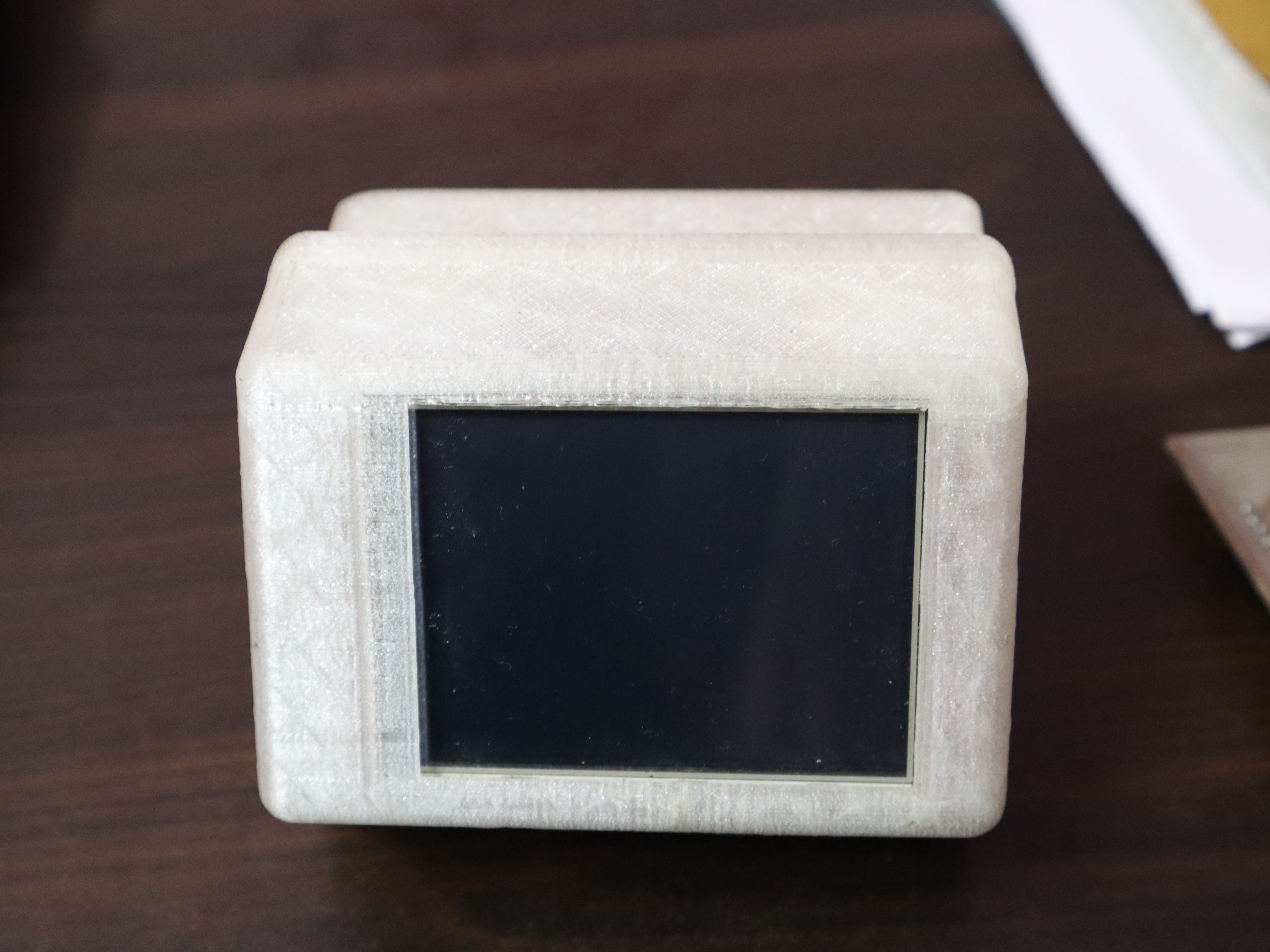
VayuDrishti pollution sensor housed in a 3D-printed case. Photo: DevPulse/Abhiyan Dahal
I had already worked on nearly 500 electronics projects and gone through 50–60 research papers by that point. Meeting experts from Nepal, India, and the U.S. also helped us shape our current system. It took around three to four months of intense trial and error to figure out the hybrid model we’re now running with.
At its core, it’s a small device with sensors that take in atmospheric air. Using laser scattering, we measure particulate matter—especially PM2.5, the most harmful pollutant—along with temperature, humidity, and wind direction. All of this data goes to the cloud and is visualized on a dashboard.
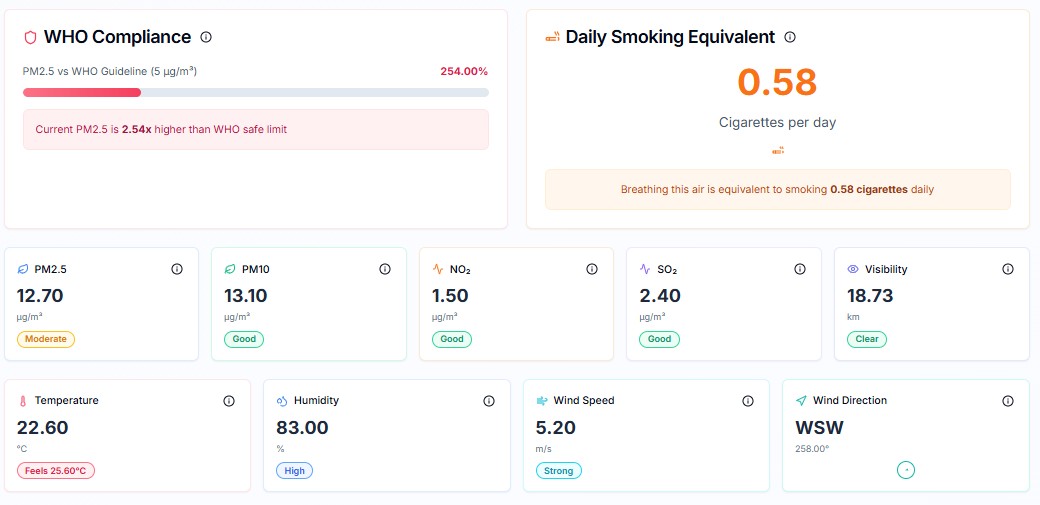
The Vayudristi dashboard displays real-time parameters such as PM2.5, temperature, humidity, and wind direction for Kathmandu. Credits: Vayudristi Website
What makes us unique is our hybrid artificial intelligence (AI) algorithm. We merge ground data with satellite data to generate higher-resolution insights. That allows us to cover larger areas with fewer devices, cutting costs by more than half compared to international standards.
Internationally, similar devices can cost upward of USD 30,000 each, not including maintenance. Our system works at 50% lower cost, and because we rely on cloud-based hybrid modeling, we reduce the need for heavy physical hardware.
So most air quality indices are full of jargon. We simplify it into actionable insights. For example, instead of just saying “Air Quality Index (AQI) is 180,” our approach can tell you or help you decide things like:
Should you go for a walk today?
Should you wear a mask? What type of mask should you wear?
And it also gives you a cigarette equivalent number, which tells you how many cigarettes the current pollution level is equivalent to breathing.
We also provide forecasts up to a week ahead, so citizens, businesses, and even governments can plan. The whole point is to make the invisible, visible—and relatable.
We’re already active in more than 30 cities across Nepal, India, and Pakistan. Governments are using our data to shape policy, and private companies are using it to plan operations. Citizens can check our dashboard for free to understand local air quality in cigarette equivalents.
We also run the Vayusena Initiative in schools. We’ve reached more than 20 schools and over 6,000 students so far, teaching them how to monitor air quality and take small actions like planting trees or reducing emissions. They upload proof, earn points, and even become “Clean Air Ambassadors.” It’s about building a movement, not just a product.
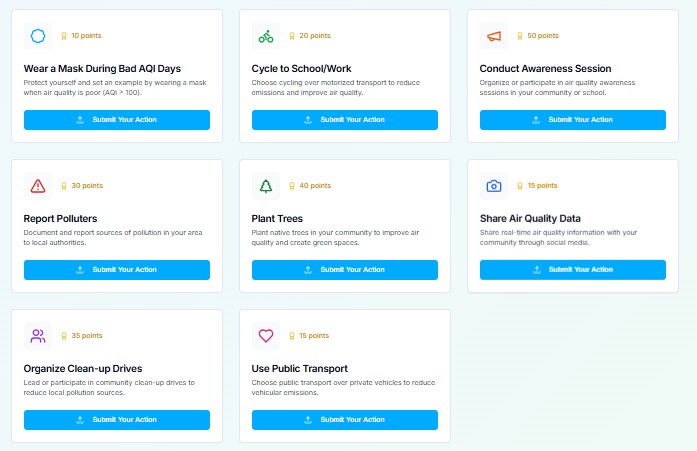
Vayusena Initiative interface on Vayudristi’s website, where students can log actions, earn points, and become Clean Air Ambassadors. Credits: Vayudristi Website
One surprising fact: in Nepal, only about 60 days a year meet World Health Organization (WHO) clean air guidelines. That was shocking.
We realized devices alone weren’t enough, so we developed the hybrid model that’s equivalent to 10 physical devices. Our system now achieves 93% accuracy compared to large, million-dollar reference stations. In the U.S., smaller devices are considered reliable if they hit 70% accuracy, so this is significant.
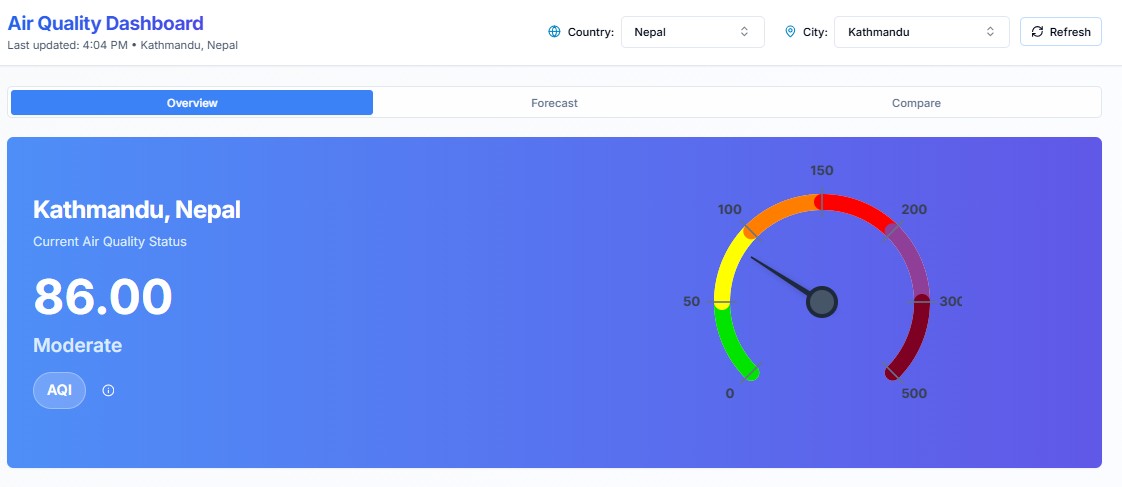
A screengrab from Vayudristi’s website showing the live Air Quality Index (AQI) reading of Kathmandu. Credits: Vayudristi Website
We also learned that Kathmandu isn’t even the most polluted part of Nepal—cities like Bharatpur, Biratnagar, and Butwal can be up to twice as polluted. That was eye-opening.
I thought about it, honestly. My family also pushed me to pursue it. But mentors, professors, even advisors abroad told me—Nepal needs solutions like this more than anywhere else. If young minds don’t build here, who will?
So yes, I could have chased opportunities elsewhere. But I believe the biggest impact I can create is right here, where the air we breathe needs urgent change. And it is possible here, we have learned that by doing.
At first, there was resistance. But when we showed results, the conversations shifted. The National Planning Commission has been positive about integrating our data into their dashboards. Local governments have even allocated budgets for piloting our systems. If this continues, we expect it to appear in the national budget soon.
We’re scaling. The goal is to deploy more than 1,000 devices across South Asia in the next phase. Beyond ambient monitoring, we’re working on wearable devices for personalized air quality data. A mobile app is also in development to reach more citizens directly.
On the intellectual property side, our ninth version has been copyrighted, and our patent is pending approval. Once certified, we’ll be able to expand internationally with stronger backing.
We’re also working on air purification units, which came directly from user feedback, so that people don’t just know about pollution—they can do something about it.
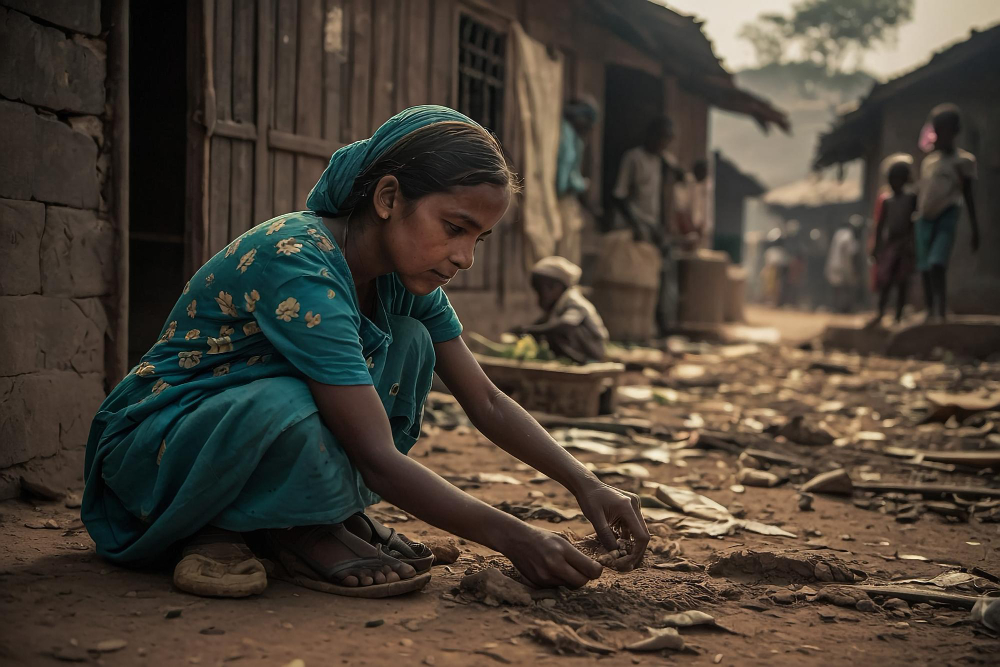
By sharing valuable information and sparking inspiration, we aim to foster growth, innovation and brighter opportunities for future generations.
Contact us